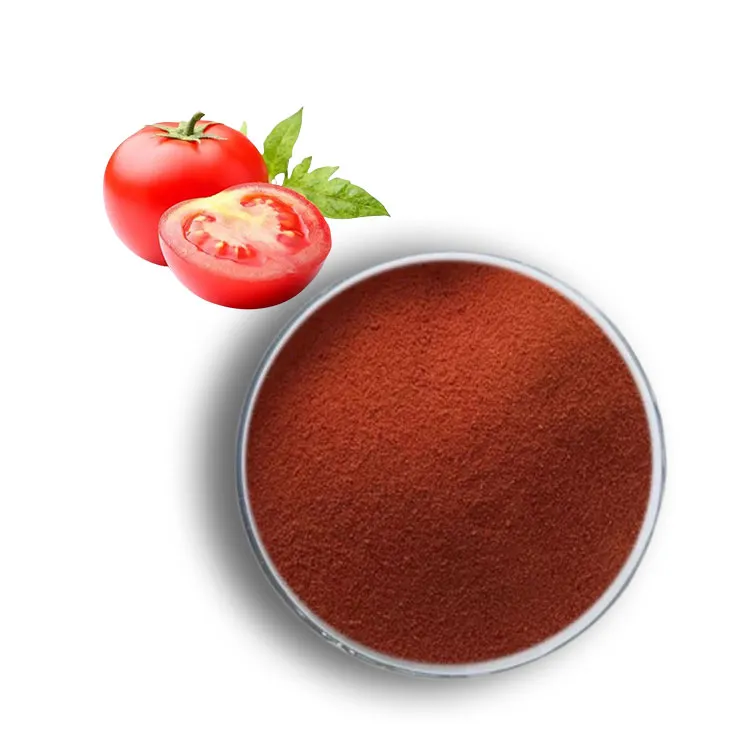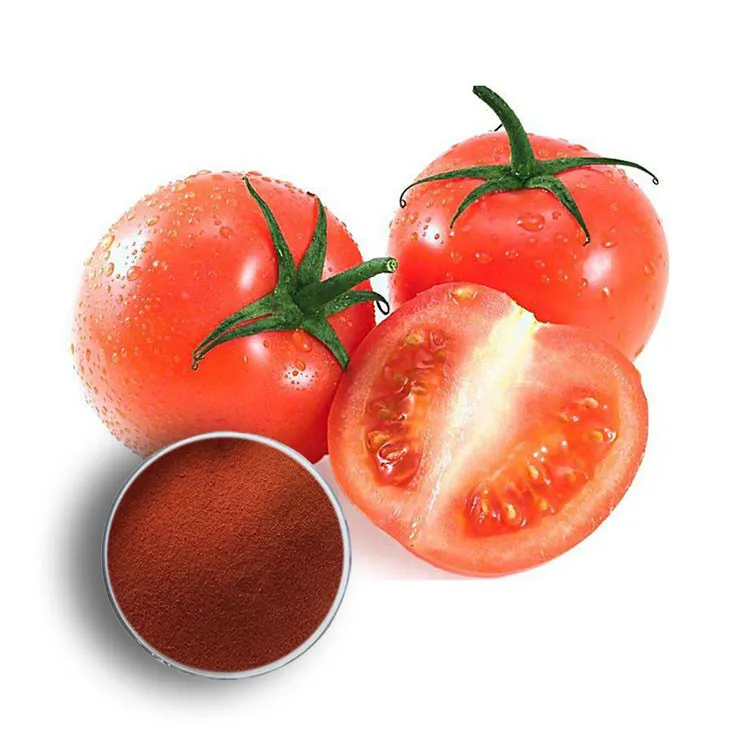- 0086-571-85302990
- sales@greenskybio.com
Extraction of Lycopene by Steam Distillation.
2024-11-29

1. Introduction
Lycopene is a natural pigment that belongs to the carotenoid family. It is widely found in fruits and vegetables, especially in tomatoes. Lycopene has attracted significant attention due to its numerous health - beneficial properties. It is a powerful antioxidant, which can help protect cells from oxidative damage, and has been associated with a reduced risk of various diseases, including certain cancers and heart diseases.
Steam distillation is one of the methods used for extracting Lycopene from tomatoes. This extraction technique offers several advantages, such as being relatively simple and having a lower environmental impact compared to some other extraction methods. However, there are also challenges associated with this process that need to be addressed.

2. The Significance of Lycopene
2.1. Antioxidant Properties
As an antioxidant, lycopene can scavenge free radicals in the body. Free radicals are unstable molecules that can cause damage to cells, proteins, and DNA. By neutralizing these free radicals, lycopene helps maintain the integrity of cells and can potentially slow down the aging process. It has been shown to be more effective in quenching singlet oxygen, a highly reactive form of oxygen, compared to other carotenoids.
2.2. Health Benefits
- Cancer Prevention: Some studies have suggested that lycopene may play a role in reducing the risk of certain cancers, such as prostate cancer. The antioxidant activity of lycopene may help prevent DNA damage and inhibit the growth of cancer cells.
- Heart Health: Lycopene may also contribute to heart health. It can help reduce oxidative stress in the blood vessels, lower cholesterol levels, and improve endothelial function. These effects can potentially reduce the risk of cardiovascular diseases.
- Eye Health: There is evidence that lycopene may be beneficial for eye health. It may help protect the eyes from age - related macular degeneration and cataracts.

3. The Steam Distillation Process
3.1. Preparation of Tomato Samples
- First, fresh tomatoes are selected. It is important to choose ripe tomatoes as they contain a higher concentration of lycopene. Any damaged or unripe tomatoes should be removed.
- The tomatoes are then washed thoroughly to remove any dirt, pesticides, or other contaminants. This can be done by rinsing them under running water.
- After washing, the tomatoes are cut into small pieces. This increases the surface area of the tomatoes, which can enhance the extraction efficiency during steam distillation.
3.2. Steam Distillation Setup
- A steam distillation apparatus is assembled. This typically consists of a flask for the tomato sample, a condenser, and a collection vessel.
- The cut tomato pieces are placed in the flask. Water is added to the flask as well. The ratio of tomato to water can vary depending on the specific extraction conditions, but a common ratio is around 1:1 or 1:2 (tomato: water).
- The flask is then heated. As the water in the flask is heated, it turns into steam. The steam passes through the tomato sample, and the lycopene is carried along with the steam due to its volatility.
3.3. Condensation and Collection
- The steam containing lycopene then enters the condenser. The condenser cools the steam, causing it to condense back into a liquid.
- The condensed liquid, which contains lycopene, is collected in the collection vessel. This liquid may also contain other components from the tomato, such as water - soluble vitamins and minerals.

4. Challenges in the Extraction Process
4.1. Low Extraction Yield
One of the main challenges in steam distillation for lycopene extraction is the relatively low extraction yield. There are several factors that can contribute to this.
- Matrix Complexity: Tomatoes have a complex matrix, which can make it difficult for the lycopene to be released completely during steam distillation. The cell walls and other components in tomatoes may trap some of the lycopene, preventing it from being carried away by the steam.
- Degradation: Lycopene is sensitive to heat, light, and oxygen. During the steam distillation process, there is a risk of lycopene degradation due to the high temperatures involved. This can lead to a reduction in the amount of lycopene that is actually extracted.
4.2. Contamination
Another challenge is the potential for contamination. Since the extraction process involves heating and the use of water, there is a possibility that the extracted lycopene may be contaminated with other substances.
- Water - Soluble Impurities: As mentioned earlier, the condensed liquid may contain water - soluble vitamins and minerals from the tomato. While these are not necessarily harmful, they can affect the purity of the lycopene extract if not removed.
- Microbial Contamination: If the extraction process is not carried out under sterile conditions, there is a risk of microbial growth in the sample. This can not only contaminate the lycopene extract but also potentially degrade the lycopene.
5. Potential Solutions to the Challenges
5.1. Improving Extraction Yield
- Pre - treatment of Tomato Samples: One approach to improving the extraction yield is to pre - treat the tomato samples before steam distillation. For example, enzymatic treatment can be used to break down the cell walls of tomatoes. This can make it easier for the lycopene to be released during the distillation process.
- Optimizing Extraction Conditions: The extraction conditions, such as temperature, time, and the ratio of tomato to water, can be optimized. By carefully controlling these parameters, it may be possible to increase the extraction yield while minimizing lycopene degradation. For example, using a lower temperature for a longer time may be more effective in extracting lycopene without causing excessive degradation.
5.2. Reducing Contamination
- Purification Steps: After the initial extraction, purification steps can be added to remove contaminants. For example, chromatography techniques can be used to separate lycopene from other components in the extract. This can improve the purity of the lycopene product.
- Sterile Conditions: Ensuring sterile conditions during the extraction process can help prevent microbial contamination. This can be achieved by using sterilized equipment and working in a clean environment.
6. Conclusion
Steam distillation is a promising method for extracting lycopene from tomatoes. The significance of lycopene in terms of its health benefits makes its extraction an important area of research. While there are challenges in the steam distillation extraction process, such as low extraction yield and potential contamination, there are also potential solutions that can be explored. By further optimizing the extraction process and addressing these challenges, it is possible to enhance the extraction efficiency and purity of lycopene, which can have important implications for the development of lycopene - based products in the food, pharmaceutical, and nutraceutical industries.
FAQ:
What is lycopene?
Lycopene is a bright red carotenoid pigment and phytochemical found in tomatoes and other red fruits and vegetables. It has strong antioxidant properties and is associated with various health benefits, such as reducing the risk of certain cancers and heart diseases.
Why is steam distillation used for lycopene extraction?
Steam distillation is used for lycopene extraction because it can effectively separate lycopene from the tomato matrix. It is a relatively gentle method that can operate at lower temperatures compared to some other extraction techniques, which helps to preserve the integrity of lycopene. Also, it can be a more selective method, reducing the extraction of unwanted compounds.
What are the main challenges in extracting lycopene by steam distillation?
The main challenges include incomplete extraction, as lycopene may be tightly bound to other components in the tomato. There can also be issues with the purity of the extracted lycopene, as other substances may be co - extracted. Additionally, the process needs to be optimized in terms of parameters such as steam pressure, temperature, and extraction time to ensure high yields.
How can the challenges in the lycopene extraction process be overcome?
To overcome these challenges, pretreatment of the tomatoes can be carried out, such as crushing or homogenizing to break the cell walls and release lycopene more easily. Optimizing the steam distillation parameters based on experimental design can also improve the extraction efficiency and purity. Using appropriate solvents in combination with steam distillation may enhance the selectivity of lycopene extraction.
What are the applications of the extracted lycopene?
The extracted lycopene has various applications. In the food industry, it can be used as a natural colorant. In the pharmaceutical and nutraceutical industries, it is used in supplements due to its potential health - promoting properties. It can also be used in cosmetic products for its antioxidant properties.
Related literature
- Optimization of Steam Distillation for Lycopene Extraction from Tomatoes"
- "A Comparative Study on Lycopene Extraction Methods: Focus on Steam Distillation"
- "Steam Distillation in Lycopene Isolation: New Perspectives"
- ▶ Hesperidin
- ▶ Citrus Bioflavonoids
- ▶ Plant Extract
- ▶ lycopene
- ▶ Diosmin
- ▶ Grape seed extract
- ▶ Sea buckthorn Juice Powder
- ▶ Fruit Juice Powder
- ▶ Hops Extract
- ▶ Artichoke Extract
- ▶ Mushroom extract
- ▶ Astaxanthin
- ▶ Green Tea Extract
- ▶ Curcumin
- ▶ Horse Chestnut Extract
- ▶ Other Product
- ▶ Boswellia Serrata Extract
- ▶ Resveratrol
- ▶ Marigold Extract
- ▶ Grape Leaf Extract
- ▶ New Product
- ▶ Aminolevulinic acid
- ▶ Cranberry Extract
- ▶ Red Yeast Rice
- ▶ Red Wine Extract
-
Nettle leaf extract
2024-11-29
-
Almond Extract Powder
2024-11-29
-
Golden Seal Extract
2024-11-29
-
Epimedium extract powder
2024-11-29
-
Garcinia Cambogia Extract
2024-11-29
-
Tormentil Extract
2024-11-29
-
Grape Seed Extract
2024-11-29
-
Eyebright Extract
2024-11-29
-
Licorice Root Extract Powder
2024-11-29
-
Echinacea Extract
2024-11-29





















